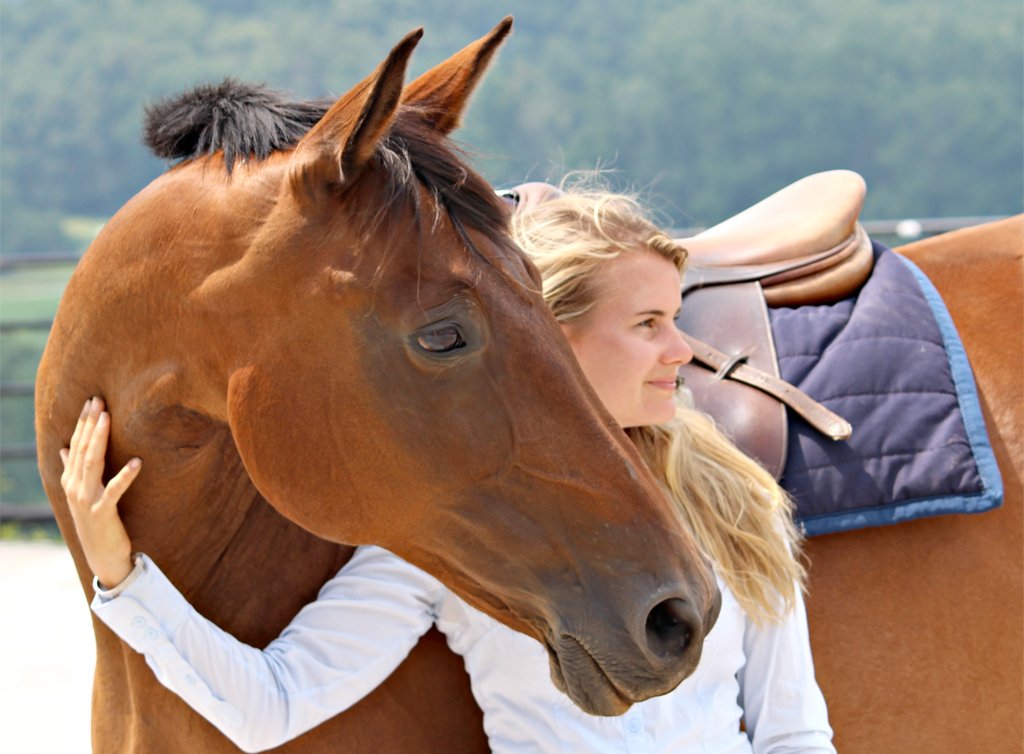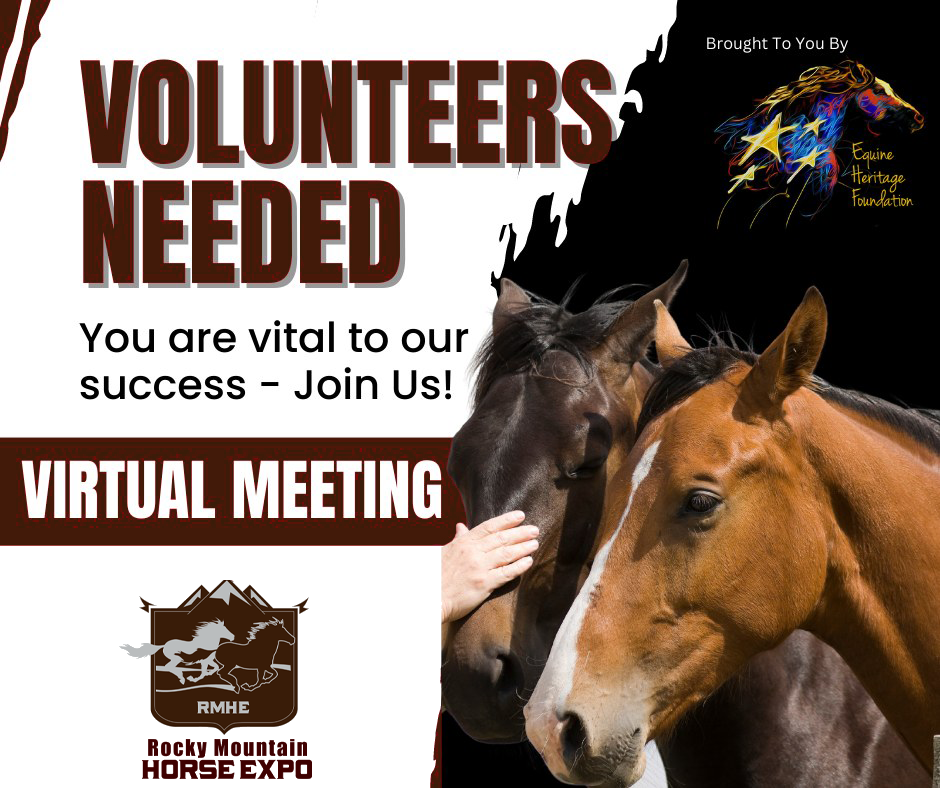If you are new to horses and riding, the idea of actually training a horse can seem rather intimidating. Horses are big, have minds of their own, and can at times seem very unpredictable. However, if you are willing to take the time to learn about how horses think and behave, you can train your horse through many issues in a way that is safe for you and the horse. The one warning that I will give here is that there are some behavioral issues that take experience and skill to work through, but the only way to get that experience is to start slow, start working through things and always be aware of your horse and what he is telling you.
Start By Watching
If you are new to horse training, the first step is to start watching horses in the field and as others are working with them. Get used to reading the language of the horse, what does it mean when the horse swishes his tail, or when he raises his head and tightens his ears? Learning to recognize and translate the horse’s body language is the number one part of being successful at training and, more importantly, keeping yourself safe. You need to know when the horse is not paying attention and needs a wake-up, or when the horse is being pushed to hard and is starting to get defensive by preparing to kick or bite. Is the horse defiant and aggressive, or is he just scared? I can’t say it enough? reading the horse is the key to training and the key to not getting hurt in the process of training. You cannot learn to read a horse by looking at pictures or reading books, you have to go out and watch real horses and be aware of what they are doing and feeling. You have to get inside the head of the horse. This is a skill that takes a lifetime to master, but start now and you may be surprised how quickly you will begin picking things up.
Basics of Training
There are two ways to train, and this applies not just to horses, but to ourselves as well. You can train with positive reinforcement, so that the horse is working towards a reward. Or you can train with negative reinforcement, so that the horse is working to avoid something. Most good horse training involves a combination of the two. Food can be used for positive reinforcement, but for horses, rest, comfort, and safety can be positive reinforcers as well. This is where having a relationship and a connection with the horse you are training will make the training easier and more effective. A relationship can mean simply that the horse trusts you because you behave consistently and the horse can see you as a companion, not someone to be feared.
Horses learn to respond to cues, just like dogs and even people. For example, most riders, when they want the horse to move forward, squeeze with their lower legs. This is a cue, the trained horse will respond by moving forward. A cue can be anything, the physical pressure from our heel or hand, a spoken word, or a non-physical pressure applied with our eyes and body language. The cue itself really doesn’t matter, as long as it is consistent. Most horsemen use some kind of pressure, whether physical or non-physical. So you apply the cue, the horse begins to move to find the right answer to get rid of the pressure. When he finds the right answer, we release the pressure and give him a reward, which can be patting and praise or a food reward if appropriate. For example, we point the lead rope and the horses nose towards the trailer and tap him on the hindquarters with a stick, these are two cues asking him to move forward. He may fidget side to side, or move backwards, but will eventually take a step forward. This is the response we wanted so we immediately drop the pressure and praise him. The praise is positive reinforcement, which we discussed in the previous paragraph. You should also give the horse a rest period, even if its short, after he gets a difficult training concept, to further establish the behavior.
The kind of training that you want to recognize and stay away from is where the horse is solely motivated to behave a certain way to avoid pain. This may be that he goes forward quickly because he knows he will get spurs in his side or a whip if he doesn’t. While difficult to discern, horses that have been trained solely through pain may behave nicely but they are mentally shut down and display little personality, curiosity, or affection. You want your horse to enjoy training, just as the family dog jumps to his feet when the leash is pulled out.
Shaping Behaviors
Behaviors will not happen perfectly the first time. Training a horse to behave a certain way or to perform a specific movement takes time and the action must be shaped until it is performed just as you want it. For example, when training a horse to perform a flying lead change, the rider commonly starts with asking the horse to perform a simple lead change with maybe 10 steps of trotting. This is at first rewarded, and over time the trainer becomes more specific, asking for fewer and fewer trot steps until eventually the horse just performs a flying change without the additional steps. Obviously there are a few other skills that the horse has mastered to perform this flying change, but the basic principle is the same, the trainer shapes the movement to his liking. Another example could be correcting a horse that is pushy on the ground. The first step is to begin asking the horse to move his shoulders away. At first this will consist of physical pressure on the lead rope and with the trainer’s hand pushing on the shoulder. When the horse moves his shoulders away from the trainer, he is rewarded. After several repetitions, the trainer will ask the horse to move from just pressure with the lead rope. Again, the horse will be rewarded when he responds correctly. Finally, the trainer will ask the horse to move just by applying the pressure through body language and the horse moves. If the horse is asked to move away with body language only the first time, he is not likely to respond, but after the consistent increases in pressure, he learns what behavior is expected, learns how to do it more correctly and so learns efficiently without undue stress.
Is your Horse in the Right State of Mind for Training?
For training to be effective, the horse must be in a good state of mind. If he is scared or distressed, the training will not go very far. The best training takes place when the horse is calm, content, and curious. When the horse comes out of this state, the trainer needs to find a way to redirect and refocus his attention. If the horse becomes fearful due to a training object, such as a whip or stick, then back off and spend some time desensitizing until the horse is more relaxed again. If the distraction is something else (maybe another horse is running in a field close by) then look for a way to get the horses attention back on you. You could keep your horse moving, or ask for simple exercises that you are confident your horse can perform. If something that you did scared the horse, or if he is getting frustrated with the training, then stop and spend some time rubbing him or just walking leisurely until he relaxes and you can go back to the training, starting with another simple exercises using plenty of rewards to make the session fun again. Do not waste your time working with a horse that is extremely stressed or excited. The horse will not be able to focus on your training, and you are sure to get frustrated.
This same concept applies to you as well – if you are frustrated after a day at work, or just feel yourself losing patience with your horse – stop! It is better to pick up the training again on another day then to push past your own mental limits and possibly do something that you will later regret and that will set your training back.


